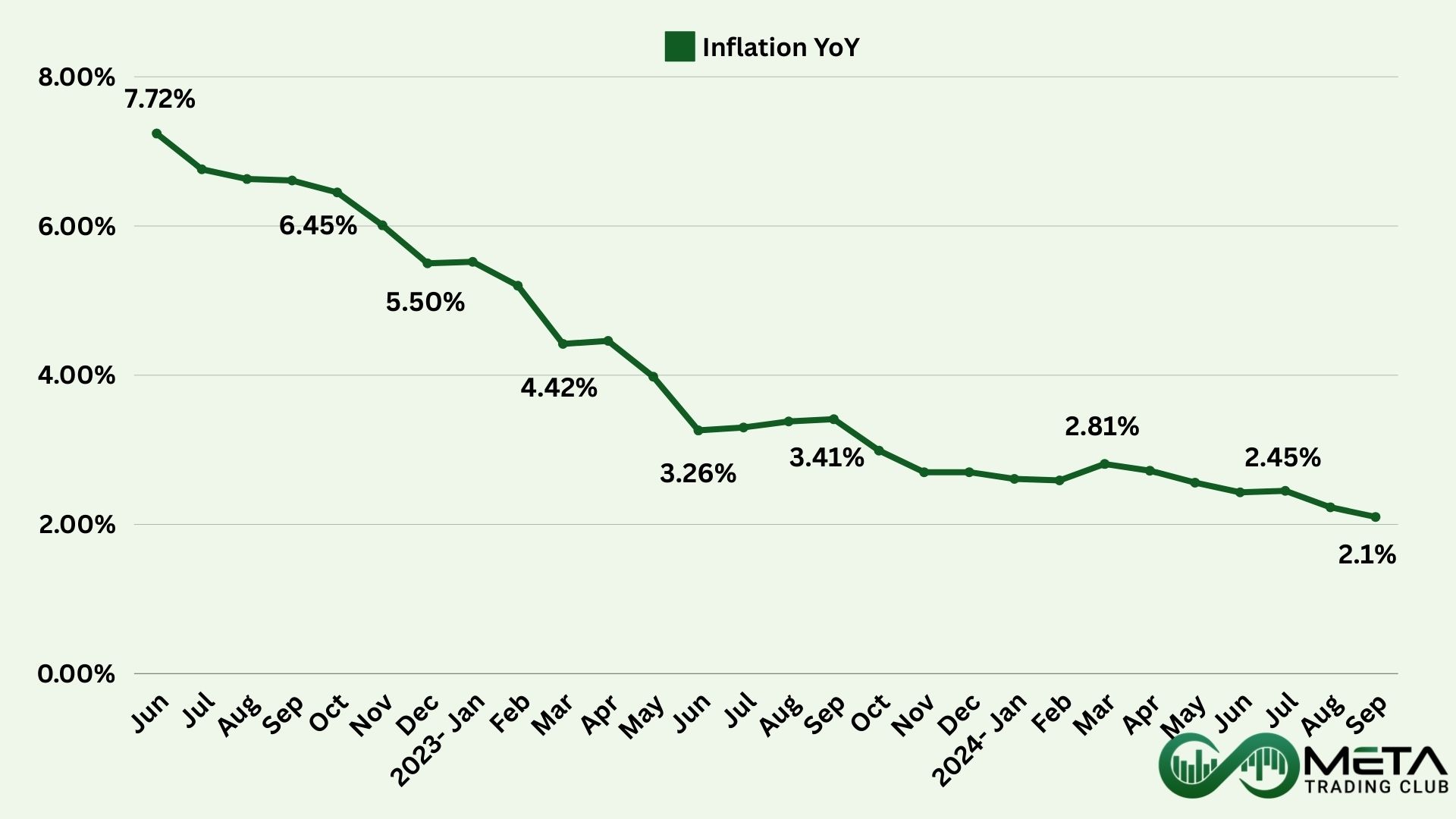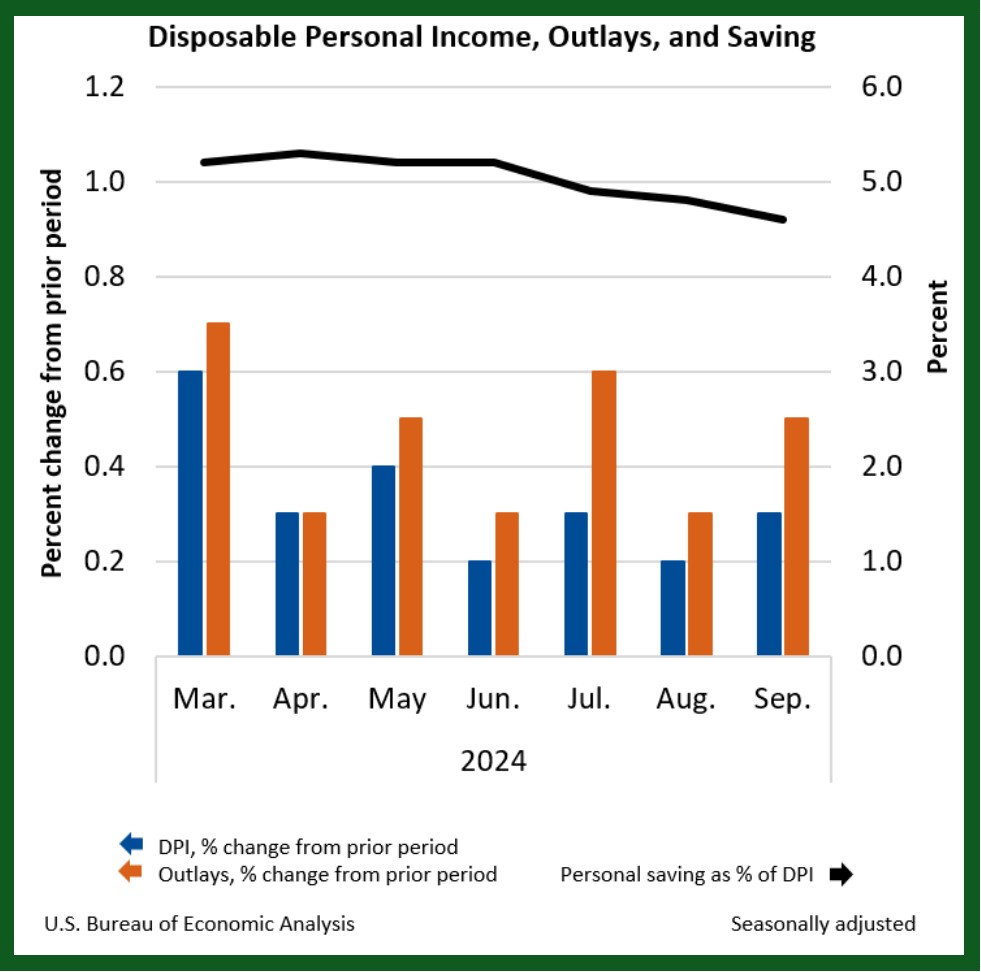The Personal Consumption Expenditures (PCE) Price Index is a crucial tool used by the Federal Reserve to evaluate the cost of goods and services that households purchase. Unlike the Consumer Price Index (CPI), the PCE accounts for changes in consumer behavior, showing how spending patterns adjust when prices fluctuate. Policymakers pay close attention to the core PCE, which excludes the often-volatile food and energy prices, to better grasp underlying inflation trends. This comprehensive inflation measure plays a vital role in guiding decisions related to interest rates and monetary policy.
August PCE Price Index
The PCE price index, which measures the average increase in prices for all domestic personal consumption, rose by 0.2% in September. Excluding the volatile categories of food and energy, the PCE price index increased by 0.3%. Real DPI (adjusted for inflation) grew by 0.1%, while real PCE increased by 0.4%.
This index, an essential tool for gauging inflation, tracks consumer price trends while excluding food and energy costs. The overall stability in inflation influences the Federal Reserve’s policies as they contemplate future interest rate decisions. The outcome aligns with the Federal Reserve’s perspective that inflation is decelerating within the US economy, bolstering the argument for a robust rate-cutting cycle by the central bank.
From the preceding month, the PCE price index for September increased by 0.2%, with goods prices decreasing by 0.1% and services prices rising by 0.3%. Food prices increased by 0.4%, whereas energy prices fell by 2.0%. Excluding food and energy, the PCE price index rose by 0.3%.
Compared to the same month a year ago, the PCE price index increased by 2.1%. There is a decrease of 1.2% in goods prices and a 3.7% increase in services prices.
The 0.4% increase in real PCE in September was driven by a 0.7% rise in spending on goods and a 0.2% increase in spending on services. Within goods, the most significant contributor was other nondurable goods, especially prescription drugs. In services, food services and accommodations, notably purchased meals and beverages, led the increase.
source: U.S. Bureau of Economic Analysis (BEA)
Personal Income and Outlays, September 2024
In September 2024, personal income rose by $71.6 billion, representing a 0.3% increase at a monthly rate, according to the U.S. Bureau of Economic Analysis. Disposable personal income (DPI), which is personal income less personal current taxes, increased by $57.4 billion (0.3%). Personal consumption expenditures (PCE) saw a significant rise of $105.8 billion (0.5%).
Also, personal outlays, which include PCE, personal interest payments, and personal current transfer payments, increased by $106.3 billion in September. However, Personal savings were $1.00 trillion, resulting in a personal saving rate of 4.6%.
source: U.S. Bureau of Economic Analysis (BEA)
Impacts of August PCE Data On Market
The PCE inflation rate of 2.1% brought the figure closer to the Federal Reserve’s target of 2%, which could influence future interest rate decisions. Markets are now pricing in a potential rate cut by the Fed at the next policy meeting.















